new posts in all blogs
Viewing: Blog Posts Tagged with: Indonesia, Most Recent at Top [Help]
Results 1 - 17 of 17
How to use this Page
You are viewing the most recent posts tagged with the words: Indonesia in the JacketFlap blog reader. What is a tag? Think of a tag as a keyword or category label. Tags can both help you find posts on JacketFlap.com as well as provide an easy way for you to "remember" and classify posts for later recall. Try adding a tag yourself by clicking "Add a tag" below a post's header. Scroll down through the list of Recent Posts in the left column and click on a post title that sounds interesting. You can view all posts from a specific blog by clicking the Blog name in the right column, or you can click a 'More Posts from this Blog' link in any individual post.

By: Krista,
on 1/13/2015
Blog:
Sylvan Dell Publishing's Blog
(
Login to Add to MyJacketFlap)
JacketFlap tags:
Bangladesh,
Community,
Cuba,
Canada,
China,
Australia,
India,
Istanbul,
Indonesia,
Zambia,
Add a tag
It’s in the grip of North American winter that I often dream of escape to warmer climates. Thanks to the WordPress.com Reader and the street photography tag, I can satisfy my travel yen whenever it strikes. Here are just some of the amazing photos and photographers I stumbled upon during a recent armchair trip.
My first stop was Alexis Pazoumian’s fantastic SERIES: India at The Sundial Review. I loved the bold colors in this portrait and the man’s thoughtful expression.
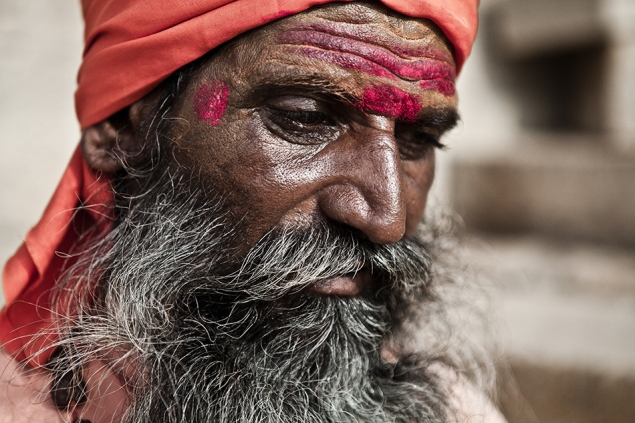
Photo by Alexis Pazoumian
Speaking of expressions, the lead dog in Holly’s photo from Maslin Nude Beach, in Adelaide, Australia, almost looks as though it’s smiling. See more of Holly’s work at REDTERRAIN.

Photo by Holly
In a slightly different form of care-free, we have the muddy hands of Elina Eriksson‘s son in Zambia. I love how his small hands frame his face. The gentle focus on his face and the light in the background evoke warm summer afternoons at play.
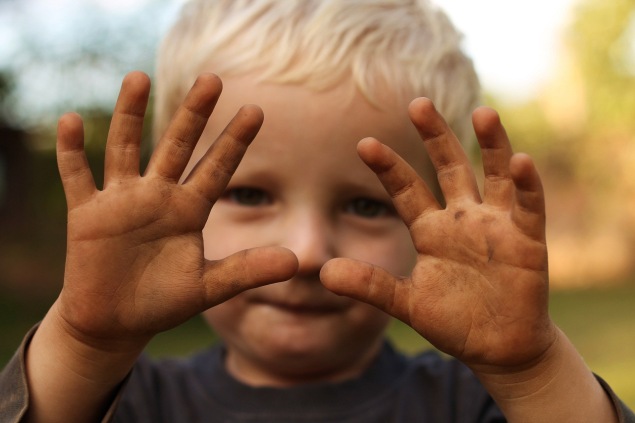
Photo by Elina Eriksson
Heading to Istanbul, check out Jeremy Witteveen‘s fun shot of this clarinetist. Whenever I see musicians, I can’t help but wonder about the song they’re playing.
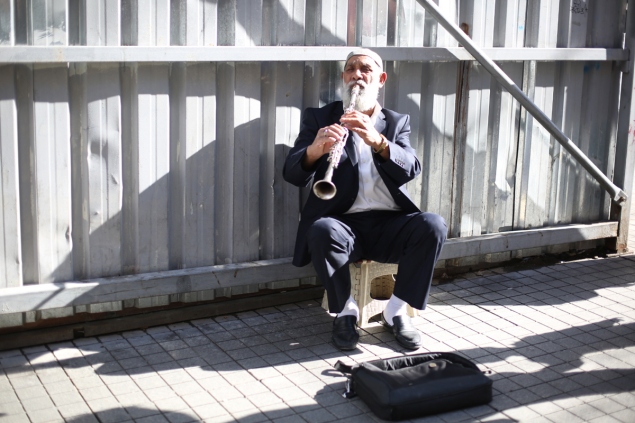
Photo by Jeremy Witteveen
Pitoyo Susanto‘s lovely portrait of the flower seller, in Pasar Beringharjo, Yogyakarta, Indonesia, captivated me. Aren’t her eyes and her gentle smile things of beauty?
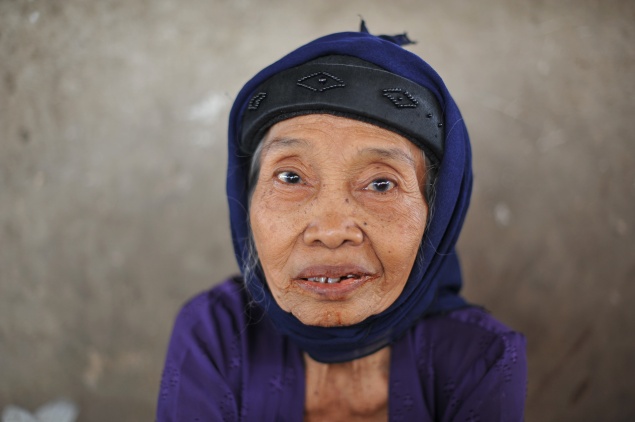
Photo by Pitoyo Susanto
Arresting in a slightly different fashion is Rob Moses‘ Ski Hill Selfie, taken in Calgary, Alberta, Canada. The juxtaposition of the bold colors and patterns in the foreground against the white snow in the background caught my eye.
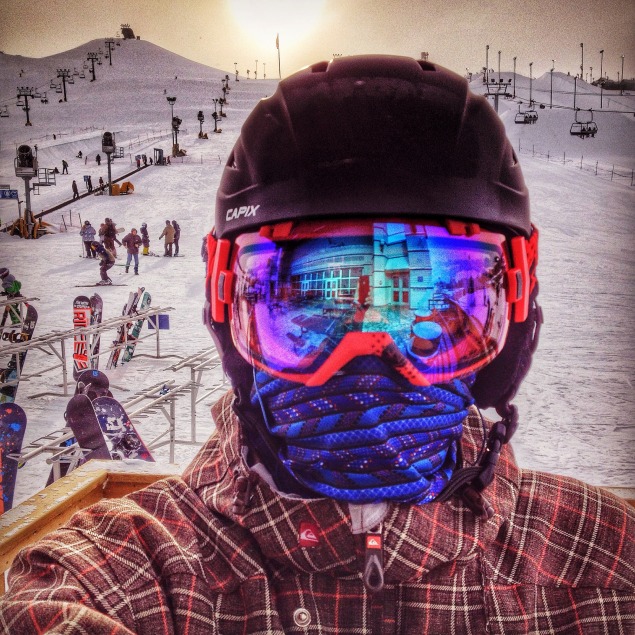
Photo by Rob Moses
Further under the category of fun juxtaposition, is Liu Tao’s photo of the elderly man in Hafei, China, whose fan reminds me of a punk rock mohawk.

Photo by Liu Tao
From Hafei, we go to Havana, Cuba, and Edith Levy‘s beautifully ethereal Edificio Elena. I found the soft pastels and gentle shadows particularly pleasing. They lend a distinctly feminine quality to the building.

Photo by Edith Levy
And finally, under the category of beautiful, is Aneek Mustafa Anwar‘s portrait, taken in Shakhari Bazar, Old Dhaka, Bangladesh. The boy’s shy smile is a wonderful representation of the word on his shirt.
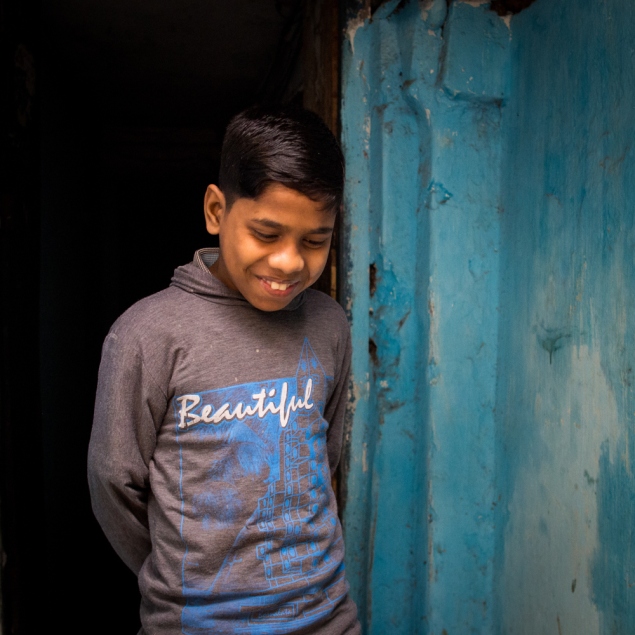
Photo by Aneek Mustafa Anwar
Where do you find photographic inspiration? Take a moment to share your favorite photography blogs in the comments.
Filed under:
Community 


Maasi women (photo credit : D. Burrows
Some of the joy of travel is when I return home and share the fun and stories with my friends and family.
On this trip though, it occurred to me that I really didn’t have a home to come back to. Not the kind of home that I had always had. This thought kept me traveling for much longer that I had planned and would take me around the world. It was in the space of time when I left the plan behind that I realized home is no longer a place, but resides in my heart. And the heart, while fragile, has an infinite capacity for love.
Some trips shape me. Some trips change me. Some trips transform me. Some trips have affected my family and friends. And sometimes, the stories I tell and the gifts I give have reached beyond those I know and love. Far beyond anything I could have ever imagined.
This is the story of the bracelet.
Wherever I was, whether in the countryside on the outskirts of Melbourne, trekking the Himalayas, in the jungles of Java or on the shores of the Bali Sea, I had my eye out for little treasures. Unique gifts I could bring back for friends and family. As I was backpacking through the world, portability was key.
In Kalibaru on the island of Java I found and purchased a handful of beautiful handmade bracelets. For the next sixty days they would travel with me all over the world. When I returned to the U.S. I gave one to my very good friend. She loved the bracelet so much she never took it off. It stayed on her wrist as she journeyed to Wales and then to Africa.
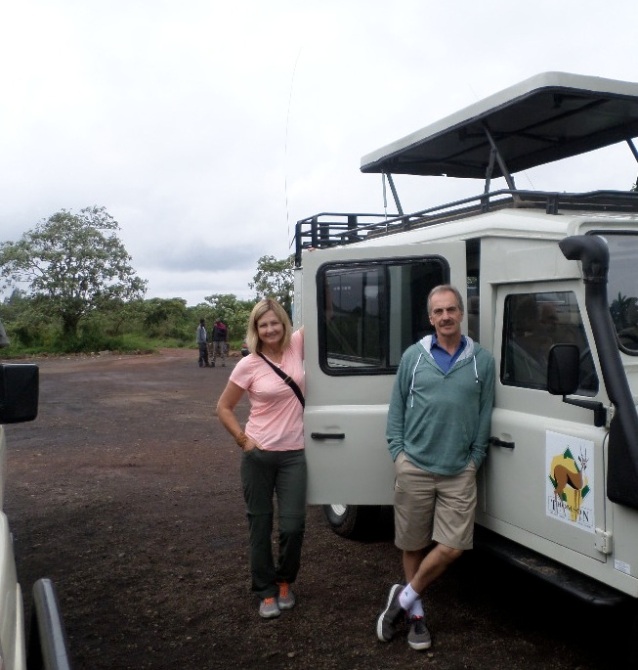
The bracelet (photo credit: A. Burrows)
And it found its way to a little village in northern Tanzania where a tribe of Maasai lived. The women of the village made bracelets to help support their families. The Maasai women surrounded my friend when they saw her bracelet. The idea of using different-sized beads on the same bracelet never occurred to them. The type of beads captivated them. The way the bracelet fastened was a curiosity. This gave the Maasai women lots of ideas about bracelets and their future designs. My friend bought one of their bracelets and when she returned home, she gave the bracelet to me.
And through my friend and the bracelet and the Maasi women, my home just got a little bit bigger.
So often in life we think that the little things we do don’t matter. We discount our influence or even our own significance, at times. But the biggest things we do can be the smallest. A smile. A joke. A well-timed call. A small gift. A simple treasure. The little things your heart whispers can bring so much joy to the world.



Here’s a track from the soundtrack of my trip.
This song was playing at an open air bar/dance club just a few meters away. I was sitting on the beach in front of a bonfire on Gili Air with a group of new friends I’d made there. We were all talking about our lives. How they’d all met, where we might all be going. Laughing a lot. I traveled alone, but found I never was alone. It was the trip’s great gift, the company and wisdom of new friends. They were from Sweden, a guy and four girls. The guy and his girlfriend were very sweet and invited me to have dinner with them earlier that night. What struck me about him was how gentlemanly he was, making sure I had a glass of wine and that I knew everyone. Later that night I would discover the heartache he’d suffered. The gal I spoke with most of the night is an artist-yogi. A few Spanish gals and I would dance until morning.
My guru on Bali said in life three things are certain: Everyone will die, everyone will grow older, everyone will lose all that they have.
I hope to dance barefoot on the beach. Often.
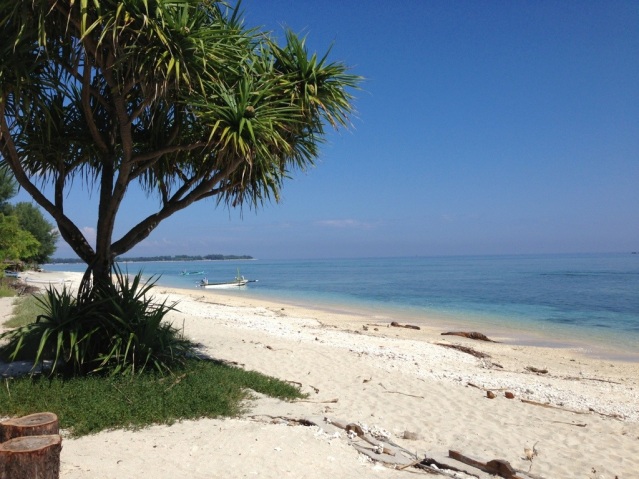


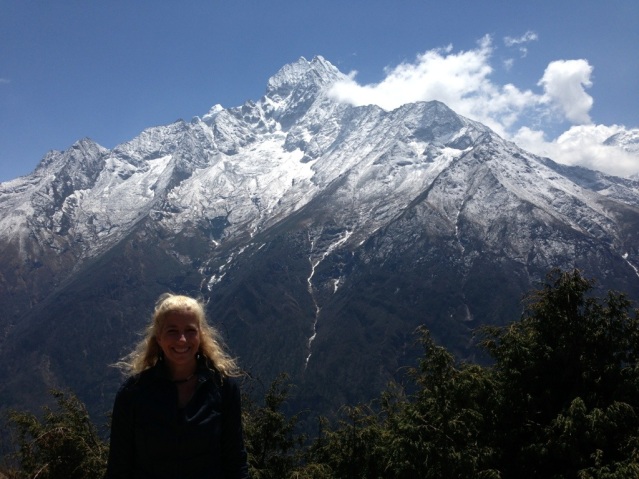
Where have I been?
Around the world, in ninety days.
A research trip for a screenplay that was supposed to be five weeks long where I traveled to Australia and Indonesia turned into so much more. Thanks for your patience while I was away. I’m in the process of understanding all the changes that I’ve been going through and putting words to the experience. Surprisingly I’ve had no jet lag when I returned nearly three weeks ago and am instead working very hard on the screenplay and some film documentaries too. There’s so much to process. The trip was life affirming as well as life changing. You’ve been great supporters of my work and I’m thrilled to have you on this journey with me. One of the places I least expected to go was Mt. Everest, and as fate would have it, while I was there the worst disaster in the history of the storied mountain unfolded. An avalanche took the lives of 16 sherpas. They were family members and friends of the sherpas who trekked with me on the Everest trail. Sometimes stories come to you. This was perhaps the biggest story I’d ever been caught up in and it influenced my entire experience in Nepal, which started off as a humanitarian trip to provide dental care to “yakland” kids (children who live above 10,000 feet) some who are orphaned (due to the ten year civil war there) and some victims of human trafficking. This is but a small a window into one of the unexpected, but wonderful stops on my journey.
I haven’t updated my about page, because I really like the fact that I had written there that one of my dreams was to travel to Indonesia. And it’s so nice when dreams come true. I don’t think I’ll update it with my new dreams yet. It’s nice to savor and celebrate moments like this. *pops the cork off the champagne bottle* *pours you a glass* Now about that stand up comedy routine…
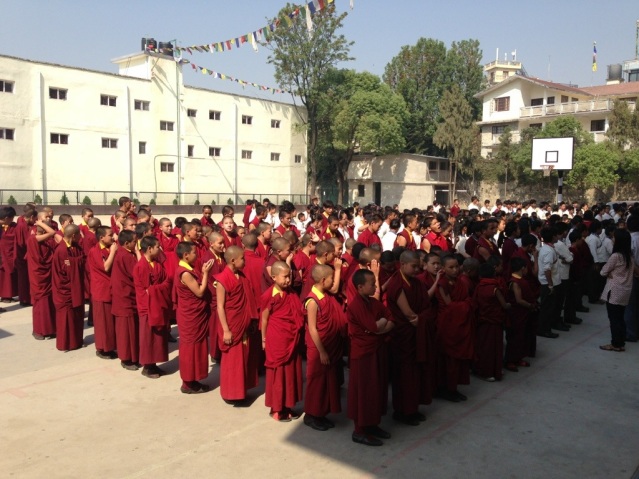
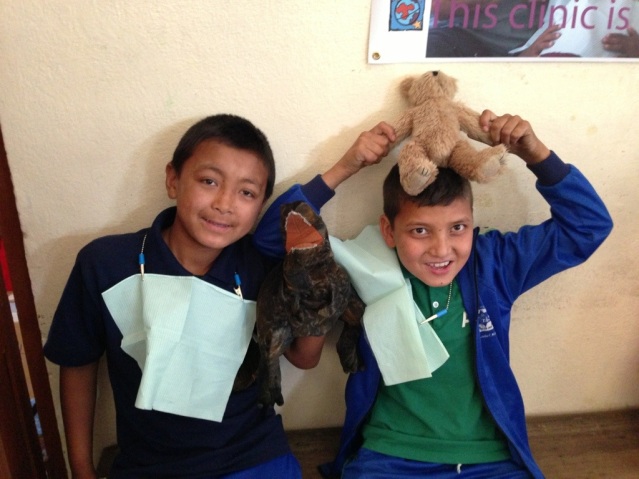


By: Grant Overstake,
on 7/26/2013
Blog:
(
Login to Add to MyJacketFlap)
JacketFlap tags:
Chile,
Uncategorized,
Canada,
Japan,
Taiwan,
Amazon,
Philippines,
Mexico,
France,
Australia,
India,
Poland,
Germany,
New Zealand,
Pakistan,
Puerto Rico,
Belgium,
Spain,
Slovenia,
United Kingdom,
Finland,
South Africa,
Brazil,
Singapore,
Nicaragua,
Ireland,
Netherlands,
Italy,
Turkey,
Israel,
Switzerland,
Nigeria,
Sweden,
Indonesia,
Mongolia,
Thailand,
Argentina,
Morocco,
Peru,
Jamaica,
Norway,
Egypt,
Indiebound,
Iceland,
Venezuela,
Bahamas,
Denmark,
Greece,
United States,
Portugal,
Czech Republic,
Colombia,
Romania,
Croatia,
Saudi Arabia,
Hong Kong,
Ukraine,
Jordan,
Yemen,
Algeria,
Hungary,
Bermuda,
Ecuador,
Bulgaria,
Estonia,
Tunisia,
Trinidad and Tobago,
Girls Sports,
Bahrain,
Lithuania,
Namibia,
United Arab Emirates,
Grant Overstake,
Inspirational Sports Stories,
Maggie Vaults Over the Moon,
young adult sports,
KSHSAA,
Pole Vault Fiction,
Track and Field Stories,
sports novels,
Recommended sports books for teens,
Watermark Books and Cafe,
Kansas State High School Activities Association Journal,
Austria Botswana,
Insirational Sports Books,
Isle of Man,
Republic of Korea,
Russian Federation,
Add a tag
Maggie Steele, the storybook heroine who vaults over the moon, has been attracting thousands of visitors from around the world. So many visitors, in fact, that she’s using a time zone map to keep track of them all.* People are … Continue reading →

By:
Aline Pereira,
on 1/20/2013
Blog:
PaperTigers
(
Login to Add to MyJacketFlap)
JacketFlap tags:
Jagdish Chitara,
Nathan Kumar Scott,
The Great Race: An Indonesian Trickster Tale,
Picture Books,
India,
Indonesia,
Tara Books,
trickster tales,
The Great Race,
Week-end Book Reviews,
Week-end book review,
Charlotte Richardson,
Add a tag
 Reviewed by Charlotte Richardson:
Reviewed by Charlotte Richardson:
Retold by Nathan Kumar Scott, illustrated by Jagdish Chitara,
The Great Race: An Indonesian Trickster Tale
Tara Books, 2011.
Ages: 3+
With The Great Race, Tara Books continues its stellar presentation of picture books illustrated by talented indigenous Indian artists. Nathan Kumar Scott retells the simple Indonesian trickster tale, a version of the tortoise and hare story. The traditional craft of illustrator Jagdish Chitara, a Waghari textile artist from Ahmedabad, is painting ritual cloths that celebrate the Mother Goddess in brilliant white, red and black. He uses the same ancient techniques and colors to depict the many stylized animal characters in this endearing folk story, his first secular project…
Read the full review
I chalk it up to heat-induced temporary insanity. It could happen to any Canadian crossing the equator.I had a strong desire to make my way to Germany, dye my hair orange and drum for a punk band which specialized in industrial music.The desire passed as the bus followed the road through the lush jungle vegetation past rice paddies and wilted looking livestock.When I thought about summoning enough energy to listen, I was convinced I could hear the plants grow in the humidity. The whole island was a hothouse.The single minded bus driver seemed to be the only one expending energy as he missed pedestrians, livestock and other vehicles, leaned on the horn.We were used to the danger by now. A sort of fatalistic resignation takes over on breakneck bus rides through the countryside of Sumatra. It was too hot to care.We had left the craziness and heroin of Penang behind. The sweat dripped off of our noses. Everyone on the bus, even the natives, had a worn out, washed out look.We were travelling from Medan, where the ferry from Penang had taken us, down the spine of Sumatra to Lake Toba, thence to Padang, about halfway down the island, on the coast.In Padang we spent hours at the consulate waiting to get our visas renewed because it was cheaper there than in Bali.Of a dozen uniformed clerks, two were reading, the rest inspected the Western girls or stared into space, a paper clip twisting in their fingers. When they did stir to attend the sweating crowd of travellers they wanted to first see proof that you had a return ticket. It’s the only legal way to enter Indonesia. It didn’t matter that we’d entered days before at Medan.The passports and applications lay in a pile on a desk.They didn’t have to worry about an overwhelming influx of immigrants heading south since the island of Java is the most thickly populated place on earth, but it was one way for the government to get money from travellers.A Japanese girl told Joyce that she had tonsilitis and that they didn’t have toilet paper even in hospitals in Padang.Seventy-five cents for dormitory beds at the local hostel. Officially marrying before getting to Asia saves a lot of problems. Single women are targets.At Lake Toba, we recovered from the bus ride during which it was too hot to sleep. The soaking heat deprived us of every traveller’s last resort, the final escape from the tedium and discomfort ... sleep, oblivion.There, time stood still, then went backward.We had landed in a timeless, primitive existence. Surrounded by the jungle and jungle sounds. Old men wailed their night songs in the dark. It sounded like a Tarzan movie.Wild boar lived in the jungle, endangered humans occasionally, provided meat and tusks more often. Snakes and mongooses and their spirits were part of the diet and the mythology.Ancient Sumatran devils caused poor sleep, restless dreams. All the dwellings had horned roofs which intruded, then dominated.A reminder that no matter what it was like in the outside world, this was here and now. This primitive existence was the present. Reality. No luxuries, no concrete, no advanced plumbing or electricity.Rats made nests in the roof so when you woke up into the flickering darkness from a dream of ancient enemy skins hanging by the fire, you could hear them running along the rafters over your head. You could see their shadows on the thatched roof when the candle light caught them.Sleep again became a refuge along with a short prayer for the balance of rats.We finally boarded a freighter, in Padang, the cheapest way to travel from Sumatra to Java.The beginning of our sea voyage was normal. We watched the port, then the island of Sumatra fade into the distance behind us and with it, the confusion and brain fever.Deck space, a place to sleep beneath the canvas strung across the deck for protection from the sun and rain, was what we paid for.Two big, deeply tanned Aussies who were obviously used to the sea and travelling by sea, probably lived by the sea, told us they had accompanied fishermen from an island near Bali on an early morning trip.They wit

By: Kirsty,
on 3/31/2011
Blog:
OUPblog
(
Login to Add to MyJacketFlap)
JacketFlap tags:
violence,
indonesia,
sierra leone,
yemen,
Tunisia,
freeport,
determinations,
Law,
Africa,
Current Events,
Iraq,
World,
civil war,
Middle East,
Afghanistan,
military,
PRI,
Gaza,
*Featured,
Bahrain,
libya,
Law & Politics,
arbitration,
egypy,
ivory coast,
karl sauvant,
mark kantor,
michael nolan,
OPIC,
overseas private investment corporation,
political risk insurance,
political violence,
Add a tag
By Mark Kantor, Michael D. Nolan & Karl P. Sauvant
The conversation in the new and old media over the last several weeks has been dominated by reports about uprisings in Tunisia, Libya and Egypt and violent clashes in Bahrain, Yemen, the Ivory Coast, Iraq and elsewhere. In Libya, fighting currently is reported to take place close to strategic oil installations. Because of the scarcity of claims arising out of similar events in investor-state arbitration, political risk insurance claims determinations by the U.S. Overseas Private Investment Corporation (OPIC) can play an important role to develop this area of law and fill these gaps in future investor-state arbitral arbitrations.
OPIC has a long history of dealing with claims under political risk insurance policies arising from political violence. Its first political violence claims arose as a consequence of the rebuilding efforts by the Organization of American States following political strife in Dominican Republic in 1967. Early claims included a 1968 claim arising out of war damage to an extension of Jerusalem airport. Since then, OPIC has addressed political violence claims relating to projects in inter alia Pakistan, Bangladesh, Chile, Indonesia, Nicaragua, Haiti, the Philippines, Rwanda, Democratic Republic of Congo, Sierra Leone, Gaza, Colombia and Afghanistan. These claims concerned damages suffered as a consequence of declared war, violent secessions, military coups, civil war, or revolution. The variety of the different situations encountered in OPIC claims determinations provides valuable insight into how political violence can and does affect foreign investments.
One key element that OPIC determinations have spent significant time addressing is attribution to establish who is responsible the underlying act of violence and for what purpose it was committed. Was violence committed by a group that was trying to overthrow the government, was it committed by a group that was under the control of a government? Or was the violence non-political in nature and as such not covered by the OPIC policy?
The OPIC claims determination with respect to the Freeport mining project in Indonesia is perhaps particularly on point for current events. Freeport Indonesia was engaged in mining activities in the area then known as Irian Jaya (now West Papua), a province of Indonesia on the island of New Guinea The area in which Freeport Indonesia operated became part of Indonesia only after negotiations between the Netherlands and Indonesia. A year after Irian Jaya was joined to Indonesia, various dissident groups, known as the Organisasi Papua Merdeka (“OPM”) formed for the purpose of asserting independence.
In 1969, a first uprising took place, which did not damage Freeport Indonesia facilities. In 1976, though, Freeport Indonesia received letters from OPM demanding assistance in a renewed insurrection expected in spring of 1977. That uprising would reputedly be joined by a major invasion of nationalist forces from neighboring Papua New Guinea. An uprising did occur in 1977, including in the area of Freeport Indonesia’s facilities. Government of Indonesia armed forces were sent to quell the insurrection. The military apparently used Freeport Indonesia facilities as a base of operations. During the period from July 23, 1977 to September 7, 1977, Freeport Indonesia’s facilities suffered damage during acts of sabotage and attacks. Because the partisans shared a common purpose to assert independence, OPIC determined that the loosely affiliated OPM did constitute a revolutionary force despite its lack of a clear command structure. OPIC further applied a “preponderance” test, weighing the evidence available to OPIC to establish whether it was more likely than not that the harm done to Freeport’s facilities was the result of
Yesterday on Beth Revis’ Across the World Tour, my waterfall adventure was featured here. I’m so excited to have been a ‘stop’ on her blog’s two week tour. If you haven’t checked it out, you still have time to hunt for the clues and enter her amazing contest.
But like I said yesterday in my comment section, my adventure didn’t stop after escaping the guys from the waterfall. As you can imagine after hiking all day, we were exhausted on our trek back home. My feet were blistered. I was desperate for a shower. And starved for food. When you’re in that kind of shape, you’ll do pretty much anything. Like jump in front of a moving jeep to hitch a ride down the mountain. The driver kindly drove us to the banana plantation where he was headed. It wasn’t the whole way, but close enough.
It was a bumpy trip and it got even bumpier when the earthquake hit. No joke! Okay, so it wasn’t a major earthquake, just enough to shake you around. When I got home, believe me, I was relieved! A couple of things had been knocked over and a wall had a large splintered crack down the middle, but overall, everything was safe.
The earthquake had broken some of the water pipes in Bukit Sentul so we had muddy water (yeah, didn’t get my nice hot shower) for the next day. And the electricity was out, too.But you know, even though I didn’t get my hot shower and had to use bott

By: Lauren,
on 11/4/2010
Blog:
OUPblog
(
Login to Add to MyJacketFlap)
JacketFlap tags:
volcano,
Indonesia,
place of the year,
Jan Zalasiewicz,
The Earth After Us,
merapi,
planet in a pebble,
magma,
engines,
Geography,
Featured,
eruption,
iceland,
air travel,
eyjafjallajokull,
flight cancellations,
Add a tag
By Jan Zalasiewicz
Volcanoes can take one by surprise. That was the case with Mount St. Helens, that famously erupted sideways rather than upwards, and it was certainly so, two millennia back, when sleeping Vesuvius awoke to bury Pompeii and many of its citizens. Eyjafjallajokull may not have been
quite so dramatic, but its effects, in tearing a large hole in our complex and delicate network of global airline communication, certainly rippled around the world.
To a geologist, the presence of a volcano on Iceland isn’t at all surprising. After all, Iceland is literally, and continuously, splitting apart, as this island sits exactly on the Mid-Atlantic Ridge. That mighty planet-sized fracture is continuously oozing magma, as the Americas pull ever farther apart – by a couple of centimeters a year, maintained for over a hundred million years – from Africa and Europe.
What raised a few eyebrows, though (mine, for sure) was the sheer filthiness of the eruption, and the amount of ash that it hurled high into the atmosphere, to the alarm of airline companies just about everywhere. For volcanoes that sit astride mid-ocean ridges are by nature generally placid by nature. For sure, they produce what seem like spectacular firework displays for the TV cameras, and flowing lava can, here and there, play merry hell with real estate values.
This is nothing, though, compared to the paroxysmal eruptions – Krakatoa, Pinatubo and the like – that occur in those parts of the world where tectonic plates are colliding. The violence of such cataclysms can destroy a whole country (and even Krakatoa was small compared to the great eruptions of the deep geological past). So why was Eyjafjallajokull trying to behave like one of the bad boys?
One answer is ice. Lying far north, Iceland is a land not just of volcanoes but of glaciers too – one of which lies on top of Eyjafjallajokull. As the uprushing magma came into contact with this, the ice flashed into steam, the expansion of which added quite a bit of oomph to the eruption. The lava, in turn, rapidly chilled by the ice, solidified quickly as it emerged, the thermal stresses shattering it into countless tiny fragments. This produced lots of ash, to be carried high into the atmosphere in the steam-driven (turbo-charged, if you like) eruption plume. It’s a bit (only a bit, mind) like putting a lot of wet wood and leaves on to a bonfire. This was one smoky volcano, and it seriously annoyed the neighbours.
Volcanic ash, of course, is feared by airline pilots, and justifiably so. One of the scariest experiences in all of flight history took place in 1982 when a British Airways Boeing 747, carrying 263 people, flew into an ash cloud from an erupting Indonesian volcano, Mount Galunggung. Ash particles entered the jet engines, melted against the hot metal, and, in effect, clogged them with reconstituted magma. All four engines failed, and the airplane, now completely without power, began to plunge towards the Indian Ocean.
The pilots kept their nerve, and prepared to ditch into the sea, while at the same time trying to restart the engines. The attempts failed until, when just a few thousand meters above the sea, the engines – amazingly – coughed back into life. They were able to fly to Jakarta, and landed safely (though not without difficulty, as the windscreen was almost opaque through being sandblasted by the sharp ash particles).
They had been saved by the same phenomenon that made Eyjafjallajokull such a disruptive volcano: thermal shock. As the stricken airplane descended, the cold air rushing through the lifeless engines chilled the molten ash, freezing it into solid volcanic glass. The chilling was fast enough for thermal stresses to shatter this glass, causing enough of it to break off to allow the engines to re-start. It was a lucky squeak.
That

By: shelf-employed,
on 6/15/2010
Blog:
Shelf-employed
(
Login to Add to MyJacketFlap)
JacketFlap tags:
digital audiobook,
history,
adventure,
book review,
Australia,
series,
J,
Indonesia,
39 Clues,
Add a tag
Yesterday was a fabulous day. Very serendipitous. Joe and I have been thinking about how we'll celebrate our 25th Anniversary. We've talked about going away, very far away. Named different countries we'd always wanted to visit. Dreamed about what we'd do in each place. In truth, it would probably be more restful just to chill somewhere close. Not try and get away for too long, as that seems practically impossible these days. But, still we dream.
Then yesterday, we figured it all out. I was at the Spirit Garden, just looking at my friend Wawi's artwork when a lady asked if I worked there. I said I didn't but asked if I could help her find something. She said she was looking for Jason. A friend of ours who is out of town. I told her he wouldn't be back until tomorrow and she said "Well, tell him that Patricia from Bali came by." Really? Wow. I said I would and we struck up a conversation about Indonesia and that I really was curious about what it would be like to visit Java. She said she had never been and that there is some beautiful furniture in Java. She gave me her info and said that my hubby and I should stop by and stay with her in Bali and she would travel with us to Java. How cool is that? When I told Joe about it, he said great. Let's do it. I love him. Here's hoping we can swing that trip!
Which leads me to today's question...



Title: Gecko's Complaint: A Balinese Folktale
Retold by: Ann Martin Bowler
Illustrated by: I. Gusti Made Sukanada
Hardcover: 32 pages
Publisher: Periplus Edition (HK) Ltd (May 2003)
Reading Level: 4-8
Theme: Folktale
First of, you might be thinking 'Where is Balines?" or "Oh, wow, I didn't know Balinese existed" Well you're not alone. This is the first time I stumble upon it too so don't worry :). Well I then Google the word and found out that Bali is an Indonesia Island.
Gecko's Compliant is about a Gecko who couldn't sleep at night, until one day, when he couldn't take it anymore, headed to the top of the hill to complaint to Raden, the Jungle Chief whom was also affected by Gecko's complaint. As the chief, he took the proper course of action and tried to solve all the problems that were leading to Gecko's; until he arrived at cloud, that's when he finally realized that complaints are really meaningless when there are more important things in life.
In a way, this story is very similar to situations in our every day life; when the only way to solve one issue is to solve the ones before it. But the ending is what I thought made the biggest impact of all, "Quit your complaining! Go home and live in peace with one another!"
I don't know about you, but that makes sense to me. :)
Enjoy




By: Rebecca,
on 5/19/2009
Blog:
OUPblog
(
Login to Add to MyJacketFlap)
JacketFlap tags:
History,
china,
Oxford,
India,
Malaysia,
A-Featured,
Singapore,
Vietnam,
World History,
Asia,
Indonesia,
Thailand,
Southeast Asia,
Angkor,
Craig A. Lockard,
Add a tag
Craig A. Lockard is Ben and Joyce Rosenberg Professor of History at the University of Wisconsin-Green Bay. In his new book, Southeast Asia in World History, he looks at  Southeast Asia from ancient times to the present, paying particular attention to the region’s role in world history and the distinctive societies that arose in lands shaped by green fields and forests, blue rivers and seas. To read more excerpts from books in the New Oxford World History series click here.
Southeast Asia from ancient times to the present, paying particular attention to the region’s role in world history and the distinctive societies that arose in lands shaped by green fields and forests, blue rivers and seas. To read more excerpts from books in the New Oxford World History series click here.
The largest and most powerful Golden Age state was the Khmer kingdom of Angkor in Cambodia, established by King Jayavarman II in 802. The name Angkor derives from the Sanskrit term for “holy city,” and Jayavarman considered himself a reincarnation of Shiva, the Hindu god of destruction and fertility. Jayavarman himself had lived many years at a Hindu court in Java before returning to Cambodia, indicating the widespread contacts among Southeast Asian states. His successors consolidated the kingdom and conquered Dvaravati, a heavily Indianized and largely Buddhist Monk state in central Thailand. One of the greatest Angkor kings, Jayavarman VII (who ruled from 1181 to 1219) was a devout Buddhist who boasted of his compassion for his people. He expanded the empire, commissioned important artworks, built roads and sturdy stone walls, and sponsored the construction of monuments and temples. His main legacy was the Bayon temple, which featured towers with large carved faces, probably of the egocentric king himself.
Angkor’s kings bragged about their achievements, and royal engravers gushed as they described on a monument King Yasovarman I in the late ninth century: “In all the sciences and in all the sports, in dancing, singing, and all the rest, he was as clever as if he had been the first inventor of them.” Angkor flourished for half a millennium. At its height in the twelfth and thirteenth centuries, the kingdom was a loosely integrated empire controlling much of present-day Cambodia, Laos, Thailand, and Southern Vietnam. Angkor carried on an active trade with China, with many resident Chinese merchants. Zhou Daguan, a Chinese ambassador in Angkor in 1296, left vivid descriptions of the society and its leaders. In a report back home, he outlined the system of justice presided over by the king: “Disputes of the people, however insignificant, always go to the King. Each day the king holds two audiences for affairs of state. Those of the functionaries or the people who wish to see the king, sit on the ground to wait for him.”
Zhou Daguan also observed a spectacular royal procession of the Angkor king, Indravarman, in 1296:
When the king goes out, troops are at the head of the escort; then come flags, banners and music. Palace women, numbering from three to five hundred, wearing flowered cloth, with flowers in their hair, hold candles in their hands, and form a troupe…Then come other palace women, carrying lances and shields, the king’s private guards, and carts drawn by goats and horses, all in gold, come next. Ministers and princes are mounted on elephants, and in front of them one can see, from afar, their innumerable red umbrellas. After them come the wives and concubines of the king, in palanquins, carriages, on horseback and on elephants. They have more than one hundred parasols, flecked with gold. Behind them comes the sovereign, standing on an elephant, holding his sacred sword in his hand. The elephant’s tusks are encased in gold.
The well-financed Angkor government supported substantial public services including hospitals, schools, and libraries…Some kings were noted as avid patrons of knowledge and the arts. One wrote that having drunk the nectar of knowledge, the king gives it to others to drink. Theater, art, and dance reflected Hindu values and stories…By the twelfth century the bustling capital city, Angkor Thom, and its immediate environs had perhaps as many as 1 million people, much larger than any medieval European city but comparable to all but the largest Chinese and Arab cities of that era. This was clearly one of the major urban complexes in the preindustrial world. The magnificent temples still standing today and a remarkable water-control network testify to prosperity and organization.
Many stone temple mountains were built by thousands of conscripted workers as sanctuaries and mausoleums, designed to represent the Hindu conception of the cosmos. At their center was a replica of Mt. Meru, where Hindus believe that the gods dwell…The temple complex Angkor Wat was the largest religious complex in the premodern world, built by some 70,000 workers in the twelfth century, and surrounded by a four-mile-long moat, dwarfing the magnificent European cathedrals and grand mosques of Baghdad or Cairo. The reliefs carved into stone at Angkor Wat and other temples provided glimpses of daily life, showing fishing boats, midwives attending a childbirth, festival jugglers and dancers, the crowd at a cockfight, men playing chess, peasants bringing goods to market, and merchant stalls According to Zhou, women operated most of these retail stalls: “In this country it is the women who are concerned with commerce.” Khmer society in this era was matrilineal, and women played a much more important role in the family, society, and politics than in most other places in the world. Women went out in public as they like, and Chinese visitors were shocked at their liberated behavior.
Some royal women at Angkor were noted for intellectual activities or service to others. Jayarajadevi, the first wife of King Jayavarman VII, took in hundreds of abandoned girls, training and settling them. After her death the king married Indradevi, a renowned scholar who lectured at a Buddhist monastery and who was acclaimed in a temple inscription as “naturally intelligent…very pure…the chief teacher of the king.” Women dominated the palace staff, and some were even gladiators and warriors. Women were also active in the arts, especially as poets…
In addition to building temples, drafted workers also constructed an extensive hydraulic network of canals and reservoirs for efficient water distribution, demonstrating some of the most advanced civil engineering in the premodern world. With the help of plows pulled by oxen or water buffalo, Khmer farmers brought a moderately fertile region into astonishing productivity…Although some scholars are skeptical, according to Chinese visitors, the Khmers may have had the most productive agriculture in history, producing three to four harvests a year, wheras elsewhere in the world only one or two was normal. Only a few premodern peoples, such as the Chinese and Balinese, could even come close to matching Khmer farming capabilities…


By:
Aline Pereira,
on 8/31/2007
Blog:
PaperTigers
(
Login to Add to MyJacketFlap)
JacketFlap tags:
Children's Books,
Poetry,
Poetry Friday,
audio books,
Edward Lear,
Lewis Carroll,
Books at Bedtime,
reading to children,
limericks,
Jabberwocky,
Abol Tabol,
Alice through the Looking Glass,
nonsense poetry,
Sukumar Ray,
Swapna Dutta,
Add a tag
 Chicken Spaghetti’s Poetry Friday this week highlights a piggy limerick. I enjoyed the quotation of a limerick interwoven with her line-by-line critique, which seems to be heading towards creating a new form of comic verse… I think Edward Lear would approve! We have been reading and reciting Lear’s limericks on and off over the school holidays, following the visit of a friend who started inventing them at the dinner table. My younger son’s love of playing with words until they are transmuted into something not-quite-completely different is fully satisfied by Lear’s Nonsense Alphabets, which he loves reading aloud with me and then chewing over on his own afterwards:
Chicken Spaghetti’s Poetry Friday this week highlights a piggy limerick. I enjoyed the quotation of a limerick interwoven with her line-by-line critique, which seems to be heading towards creating a new form of comic verse… I think Edward Lear would approve! We have been reading and reciting Lear’s limericks on and off over the school holidays, following the visit of a friend who started inventing them at the dinner table. My younger son’s love of playing with words until they are transmuted into something not-quite-completely different is fully satisfied by Lear’s Nonsense Alphabets, which he loves reading aloud with me and then chewing over on his own afterwards:
A was once an Apple-pie,
Pidy
Widy
Tidy
Pidy
Nice insidy
Apple-pie
And so on…
We were also bowled over in a Devonshire pottery (on our way home from Cornwall) when we were regaled with a complete rendition of Lewis Carroll’s Jabberwocky – truly inspiring! By chance, we had been listening to a dramatised recording of Alice’s Adventures through the Looking Glass in the car so the  boys were able to join in in parts, thus gaining more kudos than they truly deserved!
boys were able to join in in parts, thus gaining more kudos than they truly deserved!
Now I really must seek out Sukumar Ray’s collection of nonsense poetry, Abol Tabol, as chosen by Swapna Dutta in a Personal View for PaperTigers. Do any of you have a favorite of his that you would recommend – or any other nonsense poetry for children?












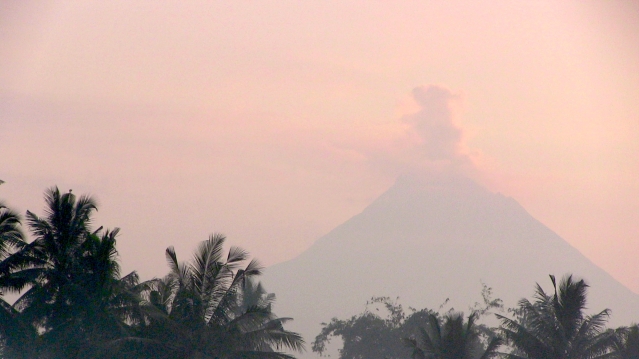








 Reviewed by
Reviewed by 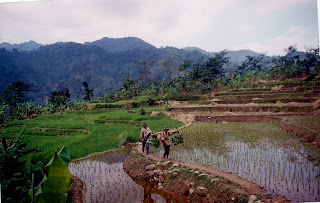
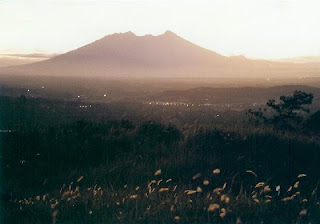




Wonderful post.
LikeLike
Absolutely stunning!
LikeLike
Great pics! They’re stunning photos!
LikeLike
Thanks! That was a nice armchair-trip!
LikeLike
The last photo is my favorite! :)
LikeLike
Krista, The words used to describe each photo made them even more sensitive and communicative. Thanks.
LikeLiked by 1 person
Your kind words have made my day. I’m humbled. Thank you!
LikeLike
I’m fond of that photo too. I can’t help but wonder why he’s smiling. Such a lovely portrait.
LikeLike
Thanks for sharing my picture :)
LikeLike
You’re welcome Rob — I really enjoyed visiting your site.
LikeLike